








MIDWEEK UPDATE 5 AUGUST 2020   A SAD LOSS FOR THE EAA AND AVIATION IN GENERAL Wayne Giles 58 (EAA322 member) and his wife Janique were shot and killed in their home at Fly Inn Estate yesterday 4 August 2020 shortly after 06h00. Their daughter Rachel in her 20s, recently qualified with a PhD, was shot in the legs, and airlifted to hospital. At the time of writing Rachel was out of the operating theatre in a stable condition. The eldest son Brandon was not injured Wayne, 58, was an industrial refrigeration engineer with interests in South Africa and Mozambique He was an avid aviation enthusiast. Wayne and Janique built the 1st home in the Fly Inn Estate village adjoining the runway about 25 years ago. Wayne flew a burgundy coloured Piper Pacer for many years before buying a Cessna 185 which he used for business and pleasure. Wayne kept a herd of thoroughbred Arab horses at the adjacent property to Fly Inn Estate in his registered Guizer Stud enterprise. In 2015, Wayne acquired the Barrows Bearhawk franchise for South Africa after a trip to Oshkosh. He built a Bearhawk Patrol in 8 months. This was followed by a Bearhawk LSA which was intended for use as a taildragger trainer and glider tug although it is a sparkling cross-country performer. Wayne had another pair of Patrols under construction being modified specifically for 'back-country flying'. There are several other Bearhawks under construction in the country. I have known the Giles family for more than 25 years with my Cessna 170 based at Fly Inn. They were substantial citizens. Wayne and Janique leave behind son Brandon and daughter Rachel and will not only be sorely missed by myself, but also by so many who are dependent on his refrigeration business and the aviation community in South Africa where he was well liked. Rest in Peace my dear Friends - Karl Jensen 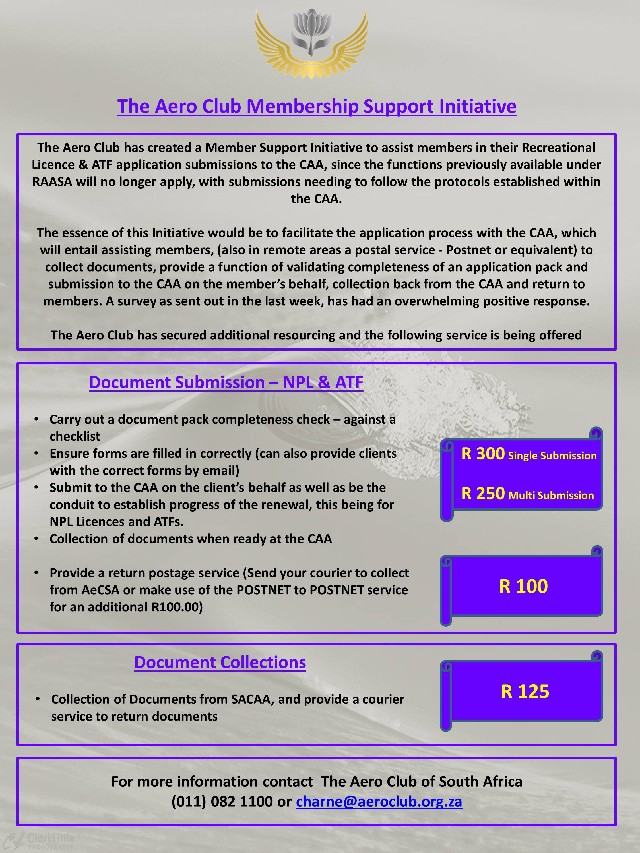  2020 CUAASA AGM HELD WITH RENEWED GUSTO President of CUAASA, Mr Sean Reitz opened the meeting with formalities followed by his President's Report. 2020 started with a positive strategy of being more closely aligned with the SACAA and other industry players to reduce friction and expedite the growth of the industry. Several productive engagements with the SACAA included topics of CUAASA and SACAA's Civil Aviation Regulations Committee (CARCom) submissions of Part 101 review and amendments, meetings with the SACAA around their RPAS Interdepartmental Technical Workgroup (RIT-WG) and the impact of a new focus from airworthiness, the new System Safety component introduced on 1 February 2020, as well as concerns relating to delayed aircraft registrations and RPAS Letter of Approval (RLA) processing time. These engagements resulted in outcomes around collaboration between CUAASA and other industry bodies to address sticking points including aircraft registrations and RLA's and the appointment of Mr Lobang Thabantso as co-chair of the RPAS interdepartmental Technical Workgroup (RIT-WG) within the SACAA, an initiative to align and smooth the internal components of the Regulator. Executive Committee Member Ms Sonet Kock updated members on the regulatory landscape. CUAASA's membership involvement in UVS International continues with enthusiasm, with the focus on promoting international coordination & cooperation, harmonized rules & regulations as well as information dissemination & awareness creation. CUAASA Executive Committee Members are taking part as working group members in more than 12 workstreams with some of the key topics feeding into Part 101 future building blocks, namely: 1. UTM - Unmanned Aerial Systems Traffic Management for airspace integration to enable large scale adoption of drones into our airspace. 2. Enforcement - This remains an issue with irresponsible drone use threatening the entire drone industry (licensed operators as well as future drone users). 3. Remote ID - Remote identification ties in with UTM and enforcement, whereby each drone notwithstanding private, corporate, or commercial, can easily be identified by any law enforcement agency. 4. Registration - Possibility of all drones within a certain weight category brought into South Africa being required to be registered - whether for hobby or commercial use, Ms Kock also updated on the importance of CUAASA's continued affiliation with the Commercial Aviation Association of South Africa (CAASA) for access to CARCom amongst others and thanked CAASA for its ongoing support. Other affiliates CUAASA has interacted with in the past year notably, AATOSA (Training Organizations) and it is foreseen this trend continuing as CUAASA will need to reach out to these co-affiliates in pursuing airspace integration and large-scale adoption of RPAS. CUAASA will lead a CARCom Workgroup tasked with looking at Drone Ports / Vertiports in relation to existing aerodrome regulations. Lastly, it was noted that during 2019 CUAASA attended South African RPAS Integration Forum (SARIF) meetings. SARIF is managed by SACAA with the aim of integrating all RPAS role players at a national level. The industry is also abuzz with the announcement and launch of the Drone Council South Africa in July this year. The formation of the Drone Council, chaired by Mr Irvin Phenyane, is a positive development from various project teams over the last two years, largely driven by the 2018 CUAASA Dossier and the 2019 engagements with the Economic Cluster. Executive Committee Member Mr Ken Venn explained to members that the Drone Council is a non-profit organisation (NPO) with a mandate to be an organising council for associations or chambers to join. Its aim is to ensure there is a National Drone Strategy in place with government and to drive 'Operation Catch Up 2023' which is an initiative to return South Africa to the forefront in Africa as the number one country leading drone operations. Assuming the Council will focus on driving growth and access for the drone industry within government, CUAASA will be pleased to contribute and participate in mutually beneficial interactions, said Mr Reitz as part of his update. CUAASA is a founding member of the Council and will lead the commercial (and aspirant) industry sector Chamber representing the Drone Operators (ROC's) with the Drone Council and providing a lead on drone regulations and commercial operations. Other updates by Executive Committee Members included Mr Alan Ball mentioning that ICASA is now digitising all applications which should mean more efficient processes. Mr Kevin Storie (CAASA, COO) thanked the members for their support during the COVID-19 Lockdown period. CAASA, DOT and SACAA have been working together during the lockdown period to assist general aviation. He updated the members on several pending CAASA regulatory, financial, and innovative agenda items, some of which were raised by CUAASA in 2019. Mr Nico van Rooyen reported that membership numbers remained stable in 2019 with significant interest shown by potential new members considering joining CUAASA in 2020. CUAASA has taken an ExCo decision to highlight the importance of member communication by assigning a dedicated Executive Committee Member specifically to communication. The new Communication Portfolio will work hand in hand with the Membership portfolio to ensure members stay up to date on developments within the industry. The election and appointment of the 2021 President and Executive Committee was confirmed, where two new members were welcomed. The Executive committee Members and respective portfolios were announced as follows: - President:- Mr Sean Reitz - Regulatory:- Ms Sonet Kock - Government:- Stakeholders Mr Ken Venn - Membership:- Mr Nico Van Rooyen - Technical:- Mr Alan Ball - SACAA Internal:- Mr Kevin Storie - Drone Council South Africa:- Mr Shaun Ledlie (new member) - Communications and IT:- Ms Kim James (new member) In closing, Mr Reitz commented, "2020 began 0ptimistically and was poised to be the "Year of the Drone". COVID-19 has changed this, so the year has become a challenge of survival for many. What gives me hope is that the drone industry profile continues to grow and we have seen a noticeable shift of 'Manned' professionals moving in to 'Unmanned'". Although there will most likely still be a tough road ahead for aviation in general, there is a renewed enthusiasm and focus with the right players involved to drive this drone industry forward and in the right direction. www.caasa.co.za | www.cuaasa.org  COVID 19 REGULATIONS AND INITIATIVES AND AEROCLUB NEWS EEA http://eaa.org.za/wp-content/uploads/2020/07/EAA-News-Letter-August-2020-1.pdf   CORONA VIRUS AND AVIATION EVENTS Due to Covid 19 and regulations regulating travelling as well as restrictions controlling the number of people congregating together, no aviation events will take place in the foreseeable future. Pilot's Post will advise our readers as soon as this changes. EAA CHAPTER 322 GATHERING WEDNESDAY 5 August 2020 @ 18h30 Guests include; Bob Zalenski, Sling builder and pilot connecting from Florida (USA not West Rand) to tell us about their Sling Youth build Chapter Project. Mike Blyth will update us on the Sling High Wing plus lots more. EAA 322 Monthly Gathering: EAA South Africa Host invites you to a scheduled Zoom meeting. Link: Connection details to join us on zoom https://us02web.zoom.us/j/83305884045?pwd=MmhLSFN4YWtsNytpSkVrVURxSG5Rdz09 Meeting ID :833 0588 4045 Password: EAA322 Don't forget to scan the QR Code (available at the meeting) to earn your MACH Number Points!!  PLEASE GO TO www.youtube.com/channel/UCCuRVZAGodT6sztTeXBGeMw and subscribe to our YouTube channel   Netherlands aviation publications, AOPA Netherlands as well as Piloot en Vliegtuig recently featured a 6 page and 4 page spread on the mighty Sling TSi and our Netherlands based Sling Official Distributor, Frisian Air, who built it. "In Germany especially, Lieuwe Koonstra of Frisian Air, sees a large market for the Sling TSi, a South African designed kit aircraft for which he is an importer. Koonstra is the proud owner of a demo Sling TSi four-seater aircraft which he keeps in his mobile hangar in Dokkum Friesland. Koonstra is a general aviator and entrepreneur but 'Inventor' would be a better word. Previously, he built houseboats and has more recently designed and built a fully foldable - and therefore mobile - insulated hangar which resides in his back yard and is where he is building his Sling TSi."  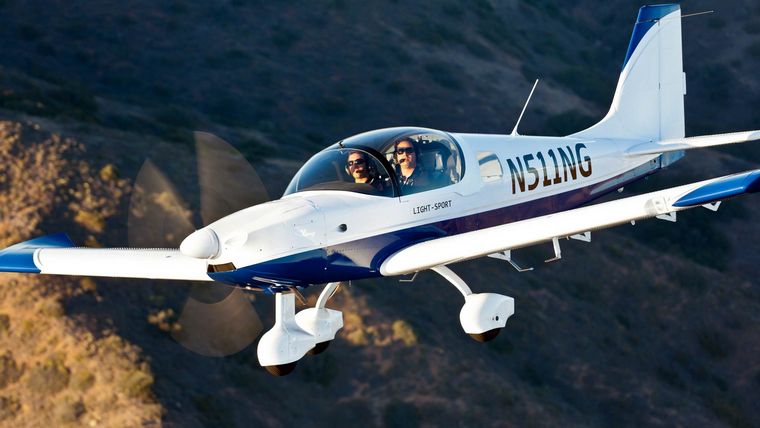 SUBJECT: Insufficient swaging of oval sleeves on the rudder. MODELS AFFECTED: All Sling Aircraft - Manufactured before effective date 2020/07/28. COMPLIANCE TIME: At the next MPI (Mandatory Periodic Inspection). LABOUR TIME: 2 Hours Insufficient swaging of oval sleeves could result in the rudder cable slipping out of the oval sleeve and subsequent loss of directional control of the aircraft. The Service Bulletin requires that inspections be carried out on all kit-built aircraft still under construction prior to first flight. https://slingaircraft.us18.list-manage.com/track/click?u=69a5281558c73848411bc6393&id=b48f76e49c&e=8743feed22 Technical Team technical@slingaircraft.com  NEW CC393I POWERED XCUBS ARE NOW STARTING TO ROLL OFF THE MANUFACTURING LINE AT CUBCRAFTERS  First announced last July, new CC393i powered XCubs are now starting to roll off the manufacturing line here at CubCrafters. Photo © CubCrafters.  SONERAI HAS ARRIVED: PLANS AND PARTS NOW AVAILABLE 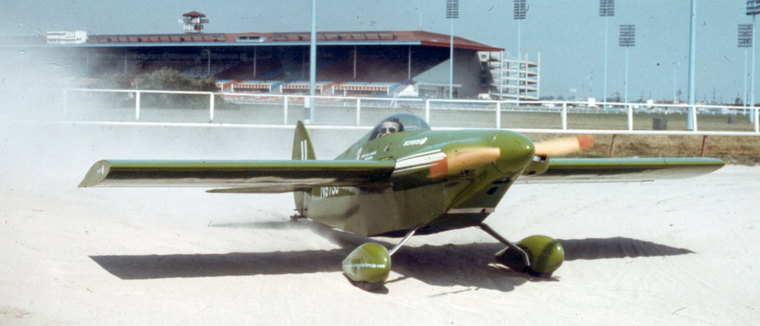 The Sonerai has come back home to Oshkosh! Sonex Aircraft is pleased to announce that Plans and parts are now available for Sonerai I, Sonerai II and Sonerai IIS aircraft. Photo © Sonex. The Sonerai is the aircraft that started it all for John Monnett. Sonerai I was designed by John for competition in the newly-conceived Formula Vee air racing class and made its first flights in 1971. After people began requesting plans for the aircraft, John was in-business. The Sonerai was eventually offered in several configurations including 2-seat variants, mid-wings, low-wings and a stretched fuselage variant and continues to be a popular homebuilt aircraft design with many examples still flying and new projects currently under construction.  DAHER HOMESAFE EMERGENCY AUTOLAND SYSTEM IS CERTIFIED ON THE TBM 940 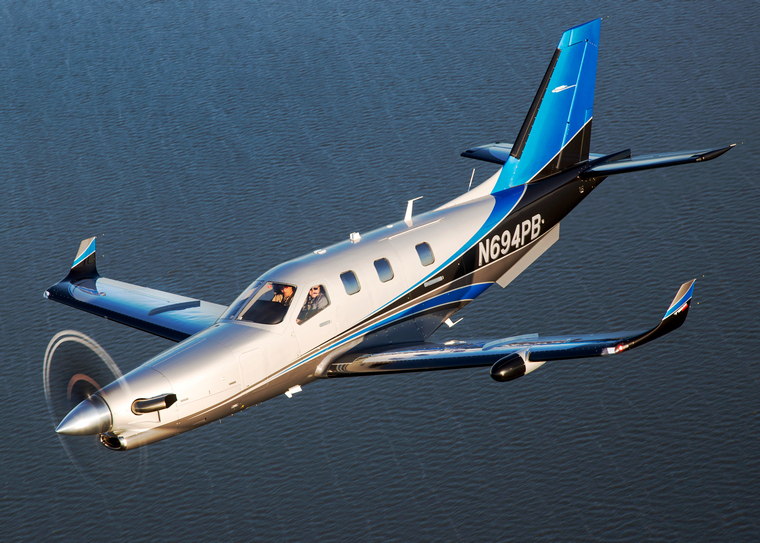 Daher HomeSafe is certified on its TBM 940, authorizing the availability of this emergency autoland system that would automatically bring the aircraft to a runway touchdown if the pilot becomes incapacitated. HomeSafe received its approval from both the European Aviation Safety Authority (EASA) and U.S. Federal Aviation Administration (FAA) airworthiness authorities. Photo © Daher. This certification clears the way for new deliveries of Daher's top-of-the-line TBM 940 very fast turboprop version that are factory-equipped with the emergency autoland system. For TBM 940s already delivered in 2020, the aircraft will be upgraded at TBM service centres. Additionally, the system will be available for retrofit on all earlier production TBM 940 aircraft at an introductory price of $85,000. HomeSafe™ is the ultimate step of the TBM e-copilot® concept evolution, after the autothrottle introduction on the TBM 940. It is based on Garmin's Emergency Autoland system - available as a part of the G3000 integrated flight deck - and has been under development for the TBM since 2017 by the airplane systems department at Daher's Aircraft Division. This work included software implementation and an intensive flight test campaign that included two hundred automated landings. The system is activated manually by an easily recognizable orange button atop the cockpit instrument panel, or semi-automatically if the Emergency Descent Mode (EDM) has been engaged. Its software integrates weather and terrain information to select the best airport for landing, taking into account fuel range and runway length. When HomeSafe™ is activated, occupants of the aircraft are briefed by a safety video on the cockpit's multifunction display. Air traffic control is informed of the situation by an automated message and the transponder automatically is set to the emergency squawk code. The system provides inputs to the aircraft's flight controls and adjusts engine power settings through the touchdown phase. During the landing rollout, HomeSafe™ will simultaneously activate the landing gear brakes and shut down the engine.   Diamond Aircraft is honoured to have received the Golden A' Design Award 2020 in the category Aerospace and Aircraft Design for the twin-engine DA42-VI. Photo © Diamond Aircraft. The main emphasis of the DA42-VI design was to create an aircraft that is easy to fly and burns fuel like a conventional single engine aircraft, but with the added safety of a second engine. The aircraft's impressive cross-country performance pleases private pilots and business owners alike, while low operating costs make it an ideal advanced trainer. The DA42-VI is a sleek, all carbon twin jet fuel engine composite piston aircraft incorporating advanced aerodynamics and the latest in passive and active safety technology for superior occupant protection, high performance and great efficiency. The interior of the DA42-VI was designed with the pilot and passengers in mind. Ergonomically designed and climate-controlled seats with variable lordosis support and adjustable backrest. Various luxurious, hand-made upholstering options as well as great optional interior features such as built-in tablet mount provisions or removable right-hand control stick. Further enhancing the elegant lines are the extensive choices of standard exterior designs and the option for exterior customization. About 1,000 DA42's have been delivered since its introduction more than 15 years ago, outselling all other certified piston twins combined. The all-carbon composite DA42-VI is equipped with efficient, clean and reliable jet-fuel AUSTRO engines, Garmin G1000 NXi with 3-axis Automatic Flight Control System and optional electrically driven air conditioning. The DA42 maiden flight took place on 9 December 2002 at Diamond Aircraft's headquarters in Wiener Neustadt (Austria). One and a half years later the DA42 made the first non-stop transatlantic crossing by a jet-fuel engine powered aircraft in general aviation. The Austro Engine jet-fuel powered DA42 NG received EASA (European Union Aviation Safety Agency) certification in March 2009 and FAA (Federal Aviation Administration) certification in April 2010. The DA42-VI, the latest and improved DA42 version, with new propeller and aerodynamic clean-ups to the rudder and engine cowling, results in increased cruise speed performance and was introduced in December 2011.  CUBCRAFTERS' NXCUB WITH 3-BLADE PATHFINDER 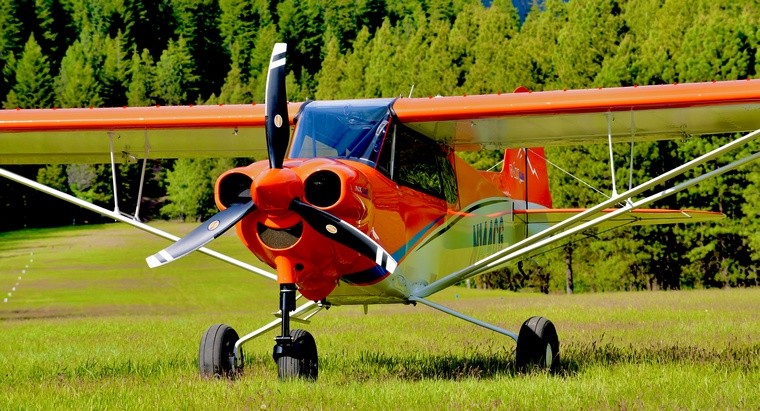 CubCrafters has chosen two of Hartzell Propeller's next-generation carbon fibre structural composite propellers as the sole options for the airplane manufacturer's new nosewheel NXCub, which is headed to certification and production. Photo © CubCrafters. Hartzell's carbon fiber composite two-blade Trailblazer prop will be standard equipment on the NXCub. Hartzell's newly certified three-blade Pathfinder propeller will be available as an option. Both propellers will be offered with a 76-inch diameter on the NXCub. Paired with CubCrafters' new Lycoming CC393i engine on the XCub. These propellers continue a tradition of ever-increasing performance for the CubCrafters and Hartzell relationship. With updated aerodynamics and internal structure, the Pathfinder is quieter, smoother, and, like the popular two-blade Hartzell Trailblazer propeller, is optimized for backcountry operations. The Pathfinder propeller with aluminium hub and structural composite blades weighs 44 lbs. and is a three-blade alternative to the reliable Trailblazer prop. CubCrafters notes that the nosewheel-equipped NXCub is already selling well and early customers have been excited about the new Pathfinder propeller option. With dozens of the new NX aircraft already sold and scheduled to be delivered to over the next 12 months, Hartzell is committed to ramping up production of the Pathfinder to fulfil the need for this next generation of backcountry propeller. CubCrafters President Patrick Horgan said, "Hartzell was the perfect collaborator as we went through this process. Backcountry flying is a part of their heritage. Working with a teammate like Hartzell, with their experience developing new aircraft with OEMs, was a rewarding experience and will give our customers an extra measure of confidence wherever they fly."  AIRBORNE TACTICAL ADVANTAGE COMPANY (ATAC) 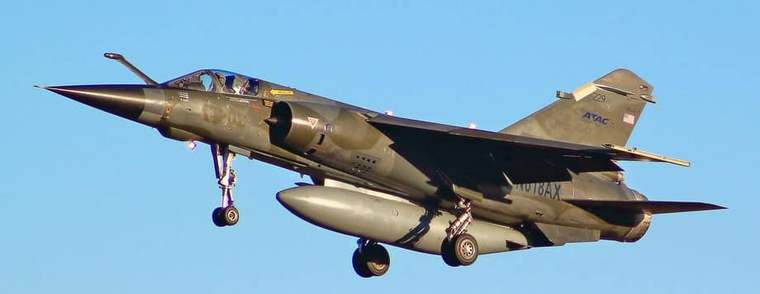 Airborne Tactical Advantage Company (ATAC), part of the Textron Systems segment of Textron Inc (NYSE: TXT), announced today that it has been selected to provide two U.S. Air Force bases with adversary air live training under the Combat Air Forces (CAF) Contracted Air Support (CAS) program. Photo © ATAC. The awards are part of an initial round of 5 operating locations the Air Force has selected under the CAF CAS program, with the Air Force stating its intention to contract for such services at up to 22 operating locations: 12 for adversary air and 10 for contracted close air support. "ATAC is thrilled to have been selected to provide adversary training at Luke and Holloman AFBs, enabling us to continue our excellence in providing training to US and allied pilots," said Scott Stacy, ATAC General Manager. "With additional ATAC F1s and pilots coming online, we are well positioned to expand our flight operations and provide adversary training at additional bases and locations, as needed." ATAC is the global leader of tactical airborne training, having pioneered much of what are now contracted air services industry standards with a fleet of over 90 aircraft, over 60,000 flight hours and 20 years of operating experience. ATAC has provided a wide range of contracted air support capabilities to the U.S. Department of Defence in locations world-wide, including the Continental United States, Hawaii and the Western Pacific region. ATAC has helped train crews from the U.S. Navy, U.S. Air Force and U.S. Marine Corps and regularly operates out of as many as 25 different air bases per year.  INDIA'S FIRST BATCH OF RAFALE FIGHTERS IS ON ITS WAY FROM FRANCE  The first five of 36 Rafale fighter aircraft bought by India from France's Dassault Aviation are being flown from the manufacturing plant by Indian Air Force pilots to India. Photo © Dassault Aviation. The three single-seater and two twin-seater aircraft are slated to make the trip in two stages, with air-to-air refueling during the first leg provided by a French Air Force A330 Phenix MRTT tanker. Also accompanying the Rafales is a second MRTT carrying 70 respirators, 100,000 test kits and 10 military health professionals to help India with its fight against the Covid-19 pandemic. The pilots took off from the Dassault Aviation Me´rignac facility near Bordeaux in western France and will land at Ambala Air Force Station in northern India, some 125 miles north of Delhi, on July 29, according to the Indian Air Force official Twitter account. The first leg is to the Al Dhafra airbase in the United Arab Emirates where the aircraft landed on Monday afternoon. They were sent off in the presence of Shri Jawed Ashraf, the Indian ambassador to France and Eric Trappier, CEO of Dassault Aviation, who saluted the "amazing efficiency and determination of the Indian Air Force and Indian Ministry of Defence, despite this unprecedented world health crisis" to ensure that the program remained on track. The Indian Air Force team flying the aircraft have been training in France for almost three years. The aircraft will integrate into the country's No 17 Squadron, dubbed "Golden Arrows.  US AIR FORCE B-1B LANCERS TRAINS WITH JAPANESE FIGHTERS  "The value these sorties have on our team's confidence and readiness is immense," Lt. Col. Lincoln Coleman, commander of the 37th Expeditionary Bomb Squadron, said in the release. "We know these missions make us more prepared, more agile and most importantly, more lethal." Lt. Col. Shirota Takamichi, commander of the Japanese force's 204th Fighter Squadron, said "To maintain and strengthen a free and open Indo-Pacific, we, continue to seek out every opportunity to enhance our capabilities and operations with our allied teams," in the release. "Regular bi-lateral exercises further enhance each team's capabilities and interoperability."  OSHKOSH AIRPORT BREAKS GROUND ON NEW GA TERMINAL 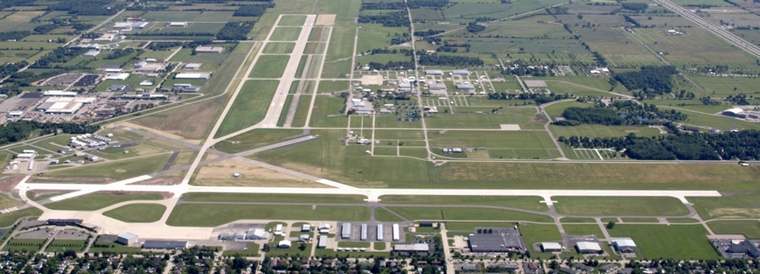 Wittman Regional Airport in Wisconsin held a ceremonial groundbreaking last week for its new general aviation terminal after the Winnebago county board approved its construction in December. The single-story, 12,500-sq-ft building will be home to Basler Flight Service, the airport's sole FBO, along with airport administration offices, car rental and public-use conference rooms. The facility is expected to be completed in the third quarter of next year.  NIGERIA, LAGOS MURTALA MOHAMMED INTERNATIONAL AIRPORT  A Middle East Airlines Airbus A330-243 the APU of a Turkish Airlines Boeing 777-300ER at Lagos Murtala Mohammed International Airport in Nigeria. The Boeing 777 had arrived at Lagos at from Istanbul, Turkey. The A330 landed after a flight from Beirut. The B777 was parked the gate as the A330 was taxiing past. The left-hand winglet cut through the underside of the APU section of the B777.  Indonesia, Wamena: A Trigana Air Services Boeing 737-300 performing a freight flight from Jayapura to Wamena (Indonesia) with 2 crew and 14 tons of goods, performed an entirely unstabilized approach to Wamena's runway 15 rolling right and left, but continued the approach to a touch down with the left wing low causing the wing tip and flaps to contact the runway surface. The aircraft sustained visible damage to flaps fairing, outboard flaps and wing tip. USA, Lake Washington near Carillon Point: A Quest Kodiak 100 operated by CLY Aviation LLC sustained unspecified damage during landing on Lake Washington near Point Carillon, Washington roll over and came to rest inverted in the water. The sole pilot onboard was not injured.   30 JULY 1921  Swiss pilot, Francois Durafour, achieves a daring first by landing his airplane on the slopes of Mont Blanc, Europe's highest mountain in the Alps. He was the first to fly over the city of Geneva and established the airfield at Collex-Bossy near Geneva. He won several local prizes and took part in several aviation meetings. Beginning in 1912, during a flying tour of Central America, Durafour was the first to fly in Guatemala and San Salvador, using a Deperdussin. Returning from Central America, Durafour flew over New York. On 14 August 1912, over Times the motor of his Borel-Morane stopped, the fuel line having broken. He quickly chose the limited space between two nearby streets and landed.  |
                             |
 |
 |

Copyright © Pilot's Post PTY Ltd
The information, views and opinions by the authors contributing to Pilot's Post are not necessarily those of the editor or other writers at Pilot's Post.